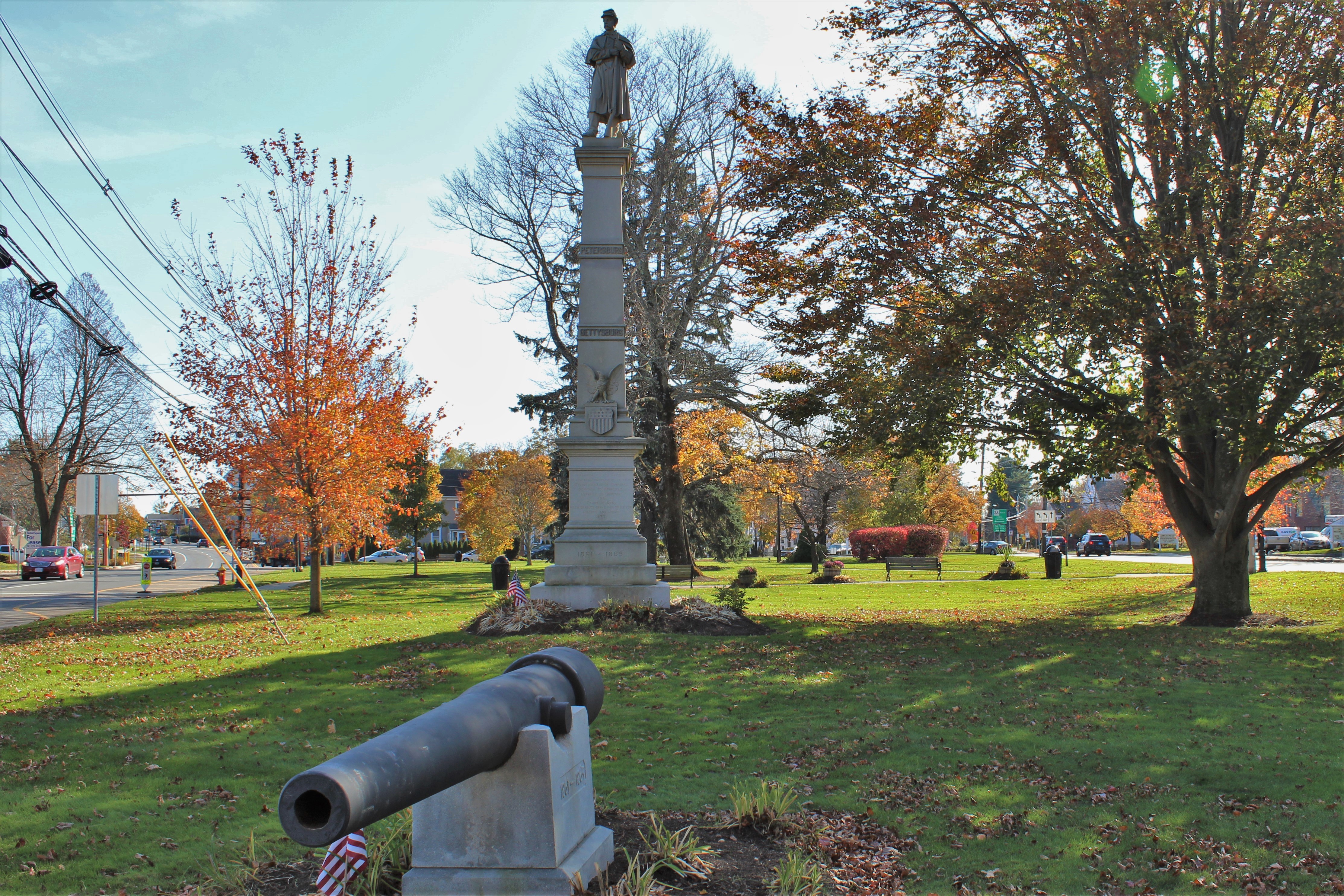
 Location: The Town Green, 8 Concord Road, Billerica
Location: The Town Green, 8 Concord Road, Billerica
Coordinates: 42°33’32.2″N 71°16’08.7″W
Date dedicated: October 8, 1873
Architect/sculptor: Statue by Carl Conrads, overall design most likely by New England Granite Works
Number of names: 20 lost in the war
Billerica’s striking, 25-foot tall monument features a copy of “The American Volunteer” by Carl Conrads. The original statue, in colossal form, was first carved for the 1876 Centennial Exposition in Philadelphia and later moved to the Antietam National Cemetery in Sharpsburg, Maryland where it stands today. Conrads sculpted for the New England Granite Works in Hartford, run by James Batterson. So it is likely that New England Granite Works designed Billerica’s monument…though conclusive evidence is lacking. Other copies of “The American Volunteer” can be found in Braintree and Lexington. During the dedication ceremony, Col. Russell H. Conwell gave the keynote address. He was a veteran, a lawyer, a skilled orator and would become the founder and first president of Temple University.
The service of any number of Billerica soldiers might be highlighted here, but the work of three Billerica women during the war truly stands out. In January 1864, Eliza A. Rogers, Anne R. Faulkner, and Elizabeth Rogers all volunteered to work with the recently established Freedman’s Bureau. They departed on January 13, 1864 and soon found themselves assigned to Camp Stanton in Benedict, Maryland—a camp of instruction for recruits of the 7th, 9th and 19th United States Colored Troops. Nearly all of the recruits were former slaves from Maryland farms and plantations.
The women were tasked with running a school to teach the soldiers to read and write. Their school that winter was in a tobacco barn. Their quarters were in a one room exterior kitchen where they did all their cooking, eating and sleeping. General William Birney, who had charge of the camp and soldiers, treated the women kindly and told them, according to Elizabeth Rogers, “we shall find men so eager to learn that teach them a little of reading and spelling and it will spread like wildfire.” He was correct. The women taught school all day, usually by companies—100 men at a time.
In addition to teaching, the women frequently made rounds in the camps and military hospitals, helping to treat the sick. They also ventured out to the surrounding country where former slaves resided on plantations abandoned by secessionists and tried to assist them with what meager supplies they had. After one such expedition, Elizabeth Rogers wrote, “I came home feeling that all this awful waste of life was not for naught if by it the oppressed could be set free.”
Click to enlarge photos:






